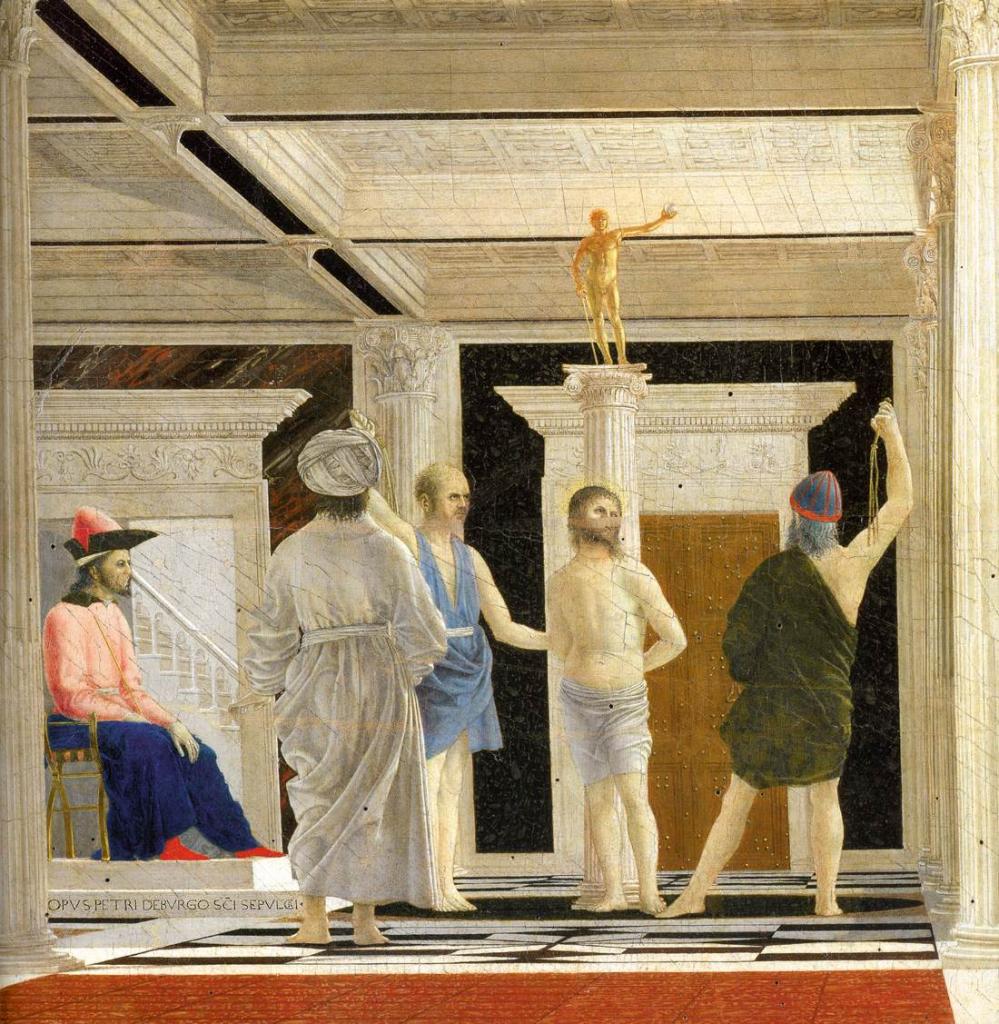
Biographie et œuvre de Piero della Francesca
Piero della Francesca (c. 1420-1492 CE) was an Italian Renaissance artist whose paintings and frescoes are characterised by their solid figures, bright colours, and harmonious composition. His masterpieces include the painted panel the Flagellation of Christ, which was created c. 1455 CE for the Ducal Palace of Urbino, and his striking portrait of his chief patron the Duke of Urbino, Federico.
.jpg)
Annunciation, 1464 Piero della Francesca
In particular, Piero della Francesca's masterpieces are spread out between Arezzo, Monterchi, and Sansepolcro in the province of Arezzo. As an early Italian Renaissance painter, Piero della Francesca's paintings were "characterized by a serene humanism, geometric forms and use of perspective" using color and spatial relations to give life.

Piero della Francesca, Flagellazione di Cristo,145560, particolare, Urbino Galleria Nazionale
Best Price Guarantee! Book & Save. Hotel Piero Della Francesca, Arezzo.
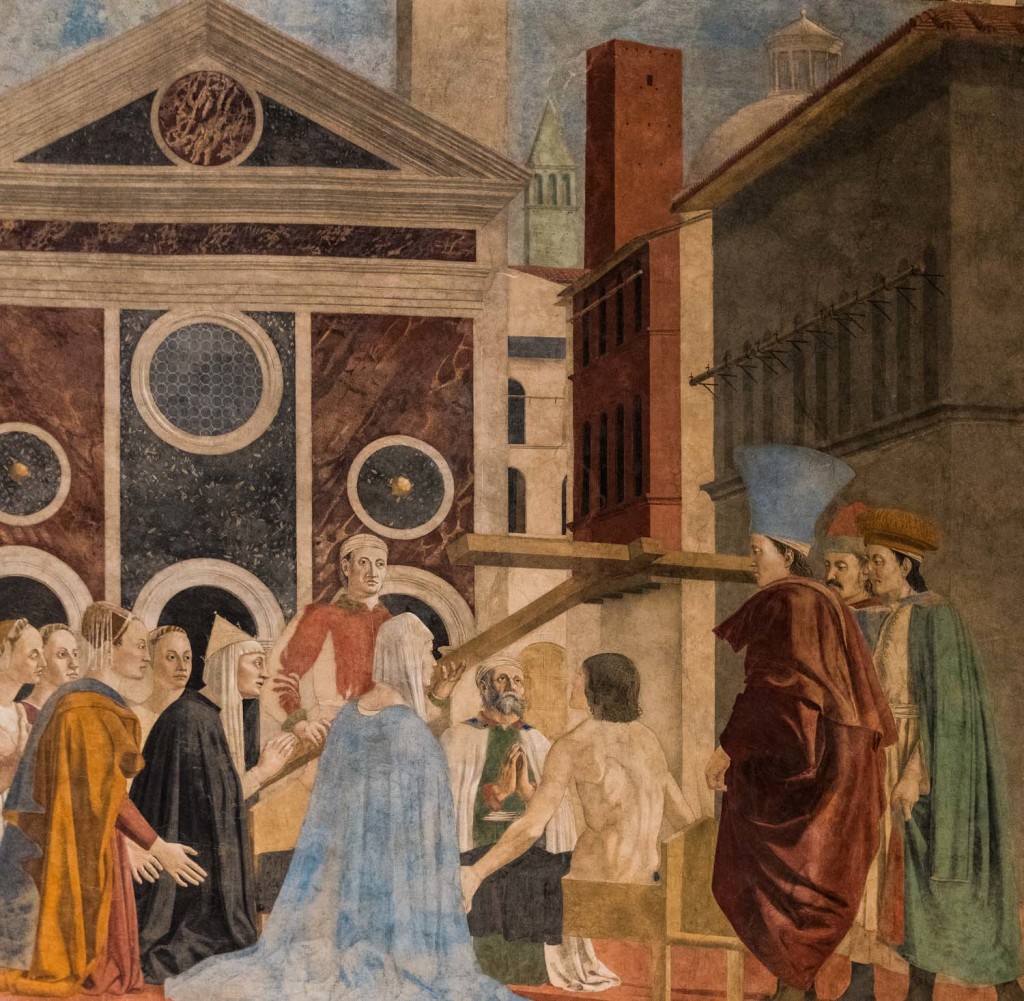
THE LEGEND OF THE TRUE CROSS BY PIERO DELLA FRANCESCA IN AREZZO
Piero di Benedetto de' Franceschi, noto comunemente come Piero della Francesca ( Borgo Sansepolcro, giugno 1412 circa - Borgo Sansepolcro, 12 ottobre 1492 ), è stato un pittore e matematico italiano. [1] Tra le personalità più emblematiche del Rinascimento italiano, fu un esponente della seconda generazione di pittori-umanisti.

PIETRO DE LA FRANCESCA IL RETROVAMENTO DELLA VERA CROCE BASILICA DE SAN FRANCISCO EN AREZZO
This is one of the major differences between Renaissance and Medieval art, and is partly why Piero is considered one of the great early Renaissance painters. Piero della Francesca, Christ (detail), The Resurrection, c. 1463-65, fresco, 225 x 200 cm (Museo Civico, Sansepolcro, Italy)
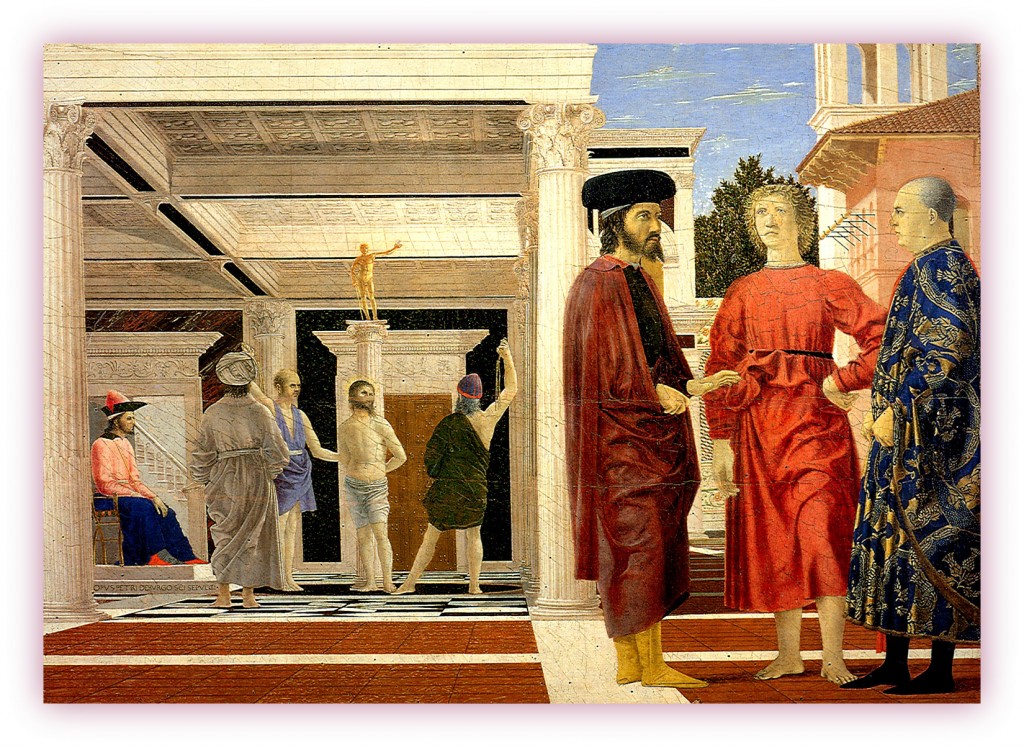
MASTERPIECES OF ART IN THE CENTURIES / URBINO Piero della Francesca The Flagellation of
The Resurrection is a fresco painting by the Italian Renaissance master Piero della Francesca, painted in the 1460s in the Palazzo della Residenza in the town of Sansepolcro, Tuscany, Italy. Piero was commissioned to paint the fresco for the Gothic -style Residenza, the communal meeting hall [1] which was used solely by Conservatori, the chief.

ピエロ・デッラ・フランチェスカ作 多翼祭壇画「慈悲の聖母」 Renaissance Kunst, Die Renaissance, Renaissance Paintings
Piero della Francesca, who came from a family of fairly prosperous merchants, is recognised as one of the most important painters of the Renaissance. Although today he is always known as Piero della Francesca, he would have been known in his lifetime as Piero di Benedetto de' Franceschi. His father, Benedetto de' Franceschi, was a leather and.

Piero della Francesca Natività (dettaglio) olio su tavola ultima fase artistica 14701475
Piero della Francesca is one of the most admired 15th-century Italian painters. The cool colour palette and geometrical compositions contribute to the refined and meditative nature of his works. Piero was born in Borgo Sansepolcro, in Tuscany. He worked in various central Italian towns, but retained links with Sansepolcro, visible in the background of the 'Baptism of Christ'.

Piero della Francesca, L'Annonciation, polyptique de Pérouse, 1470. Détrempe sur bois, 122 x 194
Dimensions. 58.4 cm × 81.5 cm (23.0 in × 32.1 in) Location. Galleria Nazionale delle Marche, Urbino. The Flagellation of Christ (probably 1468-1470) is a painting by Piero della Francesca in the Galleria Nazionale delle Marche in Urbino, Italy. Called by one writer an "enigmatic little painting," [1] the composition is complex and unusual.
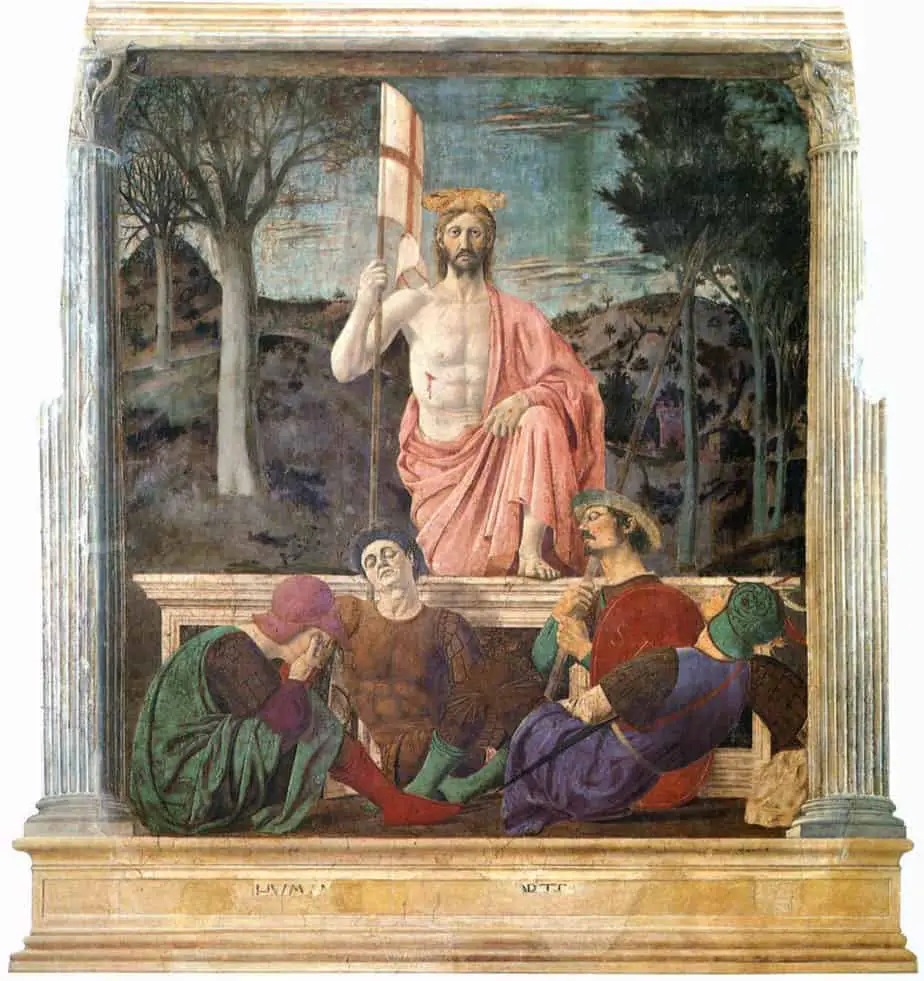
Sansepolcro, Italy "The Resurrection", Fresco by Pier Della Francesca The Catholic Travel Guide
Piero della Francesca was a unique painter among the artists and architects of the Italian Renaissance. View Piero della Francesca's artworks on artnet. Learn about the artist and find an in-depth biography, exhibitions, original artworks, the latest news, and sold auction prices.
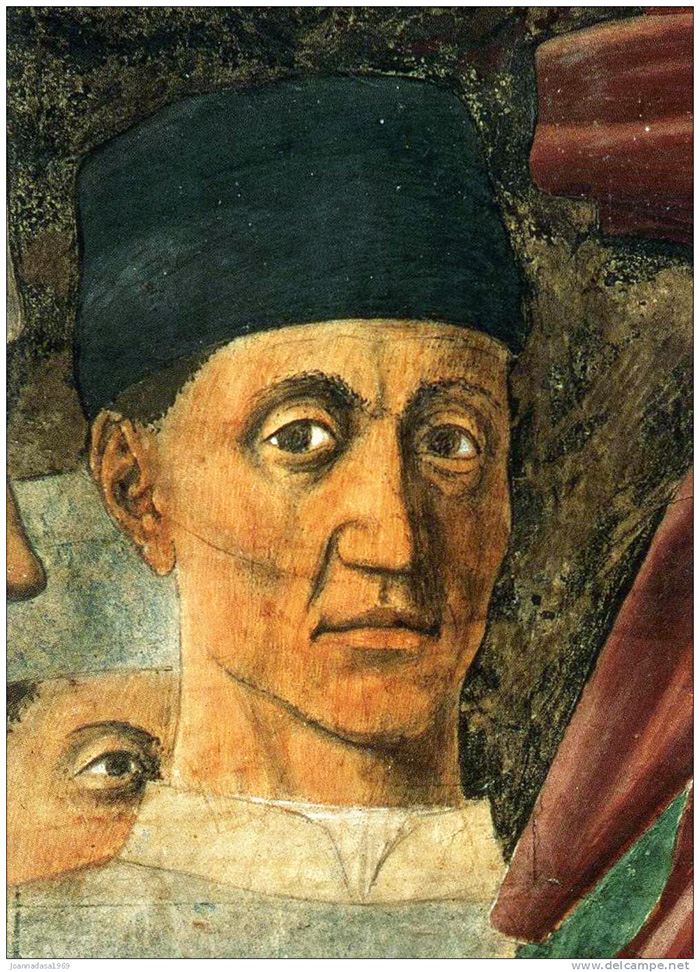
Piero della Francesca Chronology of his works Travel guide for central Italy
Piero della Francesca, (born c. 1416/17, Sansepolcro, Republic of Florence [Italy]—died October 12, 1492, Sansepolcro), painter whose serene, disciplined exploration of perspective had little influence on his contemporaries but came to be recognized in the 20th century as a major contribution to the Italian Renaissance.The fresco cycle The Legend of the True Cross (1452-66) and the diptych.
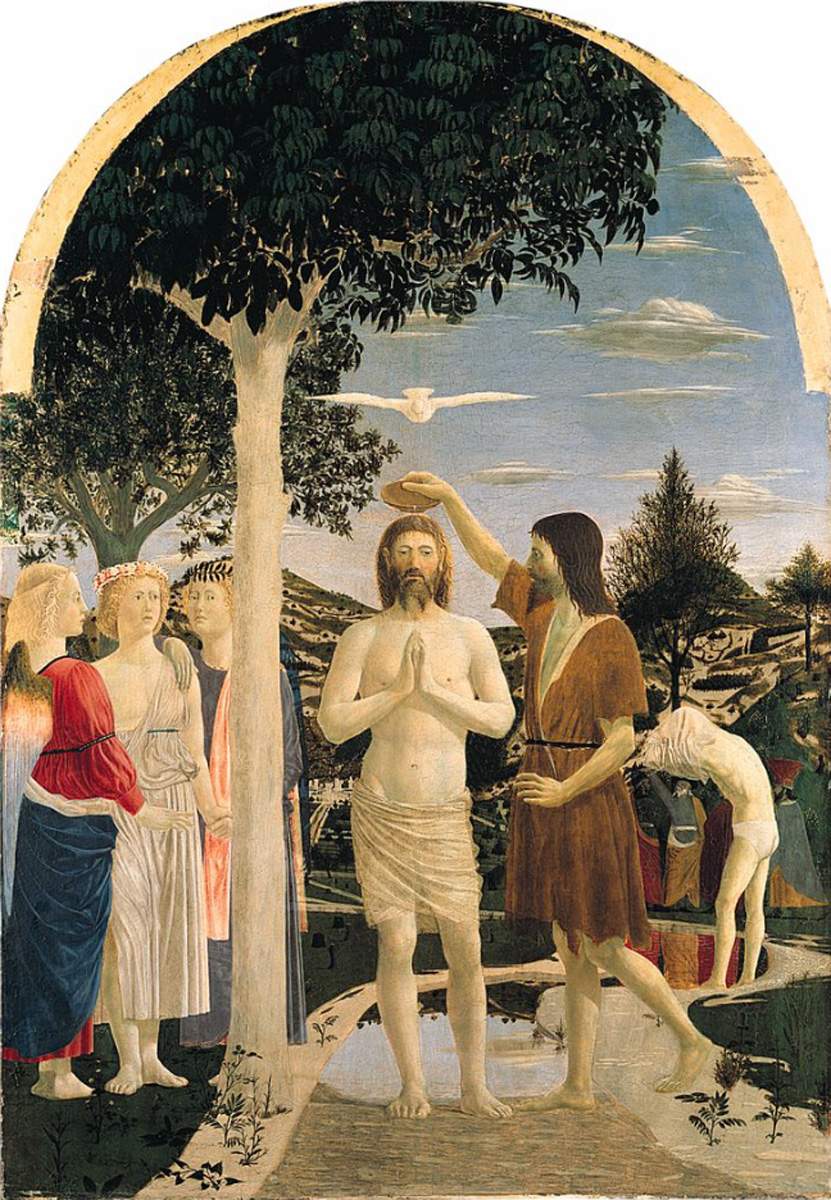
London National Gallery Top 20 01 Piero della Francesca The Baptism Of Christ
Piero della Francesca (Italian pronunciation: [ˈpjɛːro della franˈtʃeska] listen (help·info); c. 1415 - 12 October 1492) was an Italian painter of the Early Renaissance.. Piero was born and died in the town of Borgo Santo Sepolcro, modern-day Tuscany, to Benedetto de' Franceschi, a tradesman, and Romana di Perino da Monterchi.
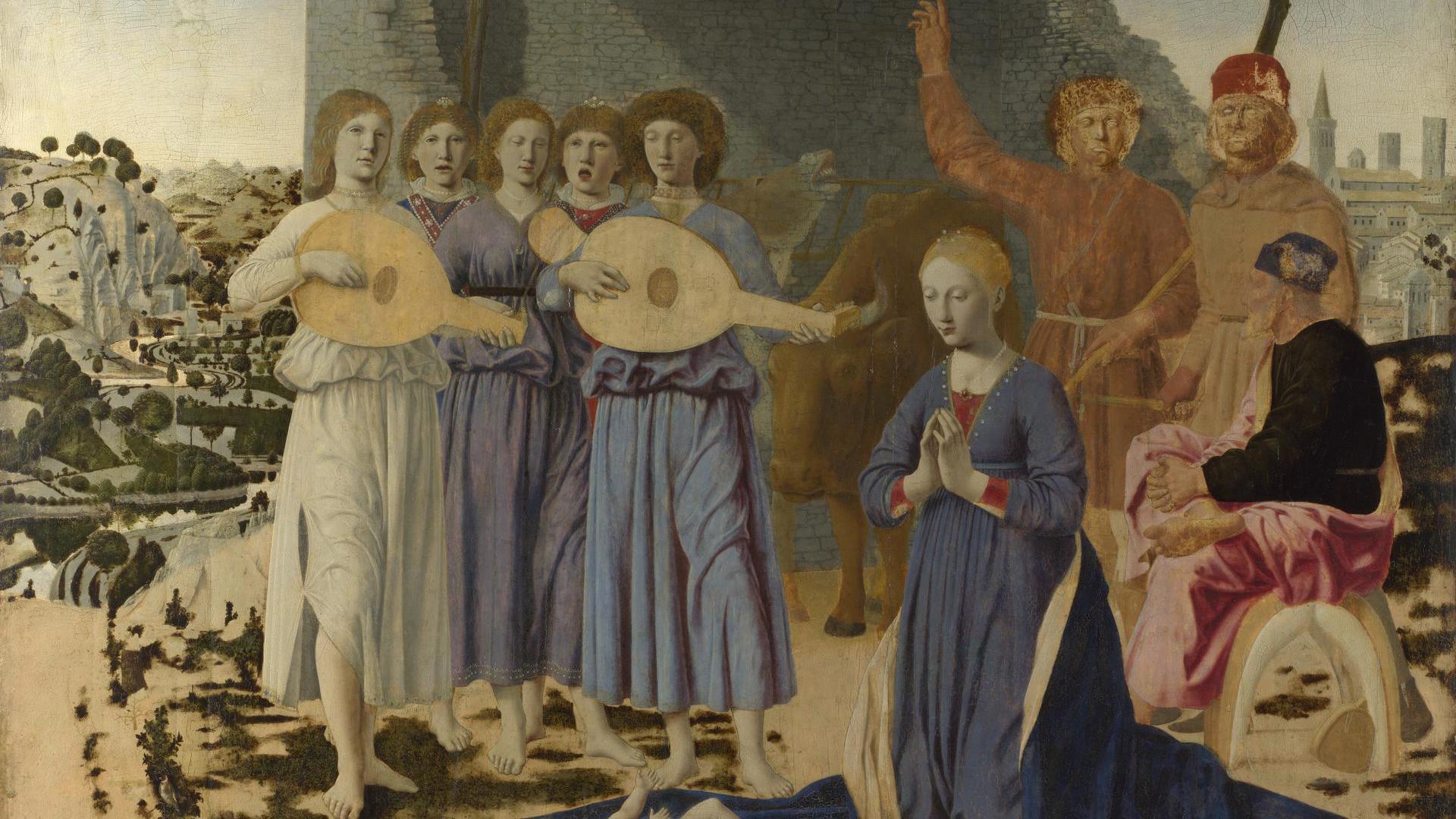
Piero della Francesca The Nativity NG908 National Gallery, London
Piero della Francesca depicted Christ's Nativity materialising as a mystical vision, basing the details of his composition on a famous account by Saint Bridget of Sweden (about 1303-1373). By setting Saint Bridget's vision within a familiar Tuscan landscape, the artist brought the extraordinary circumstances of Christ's birth directly into his own world.
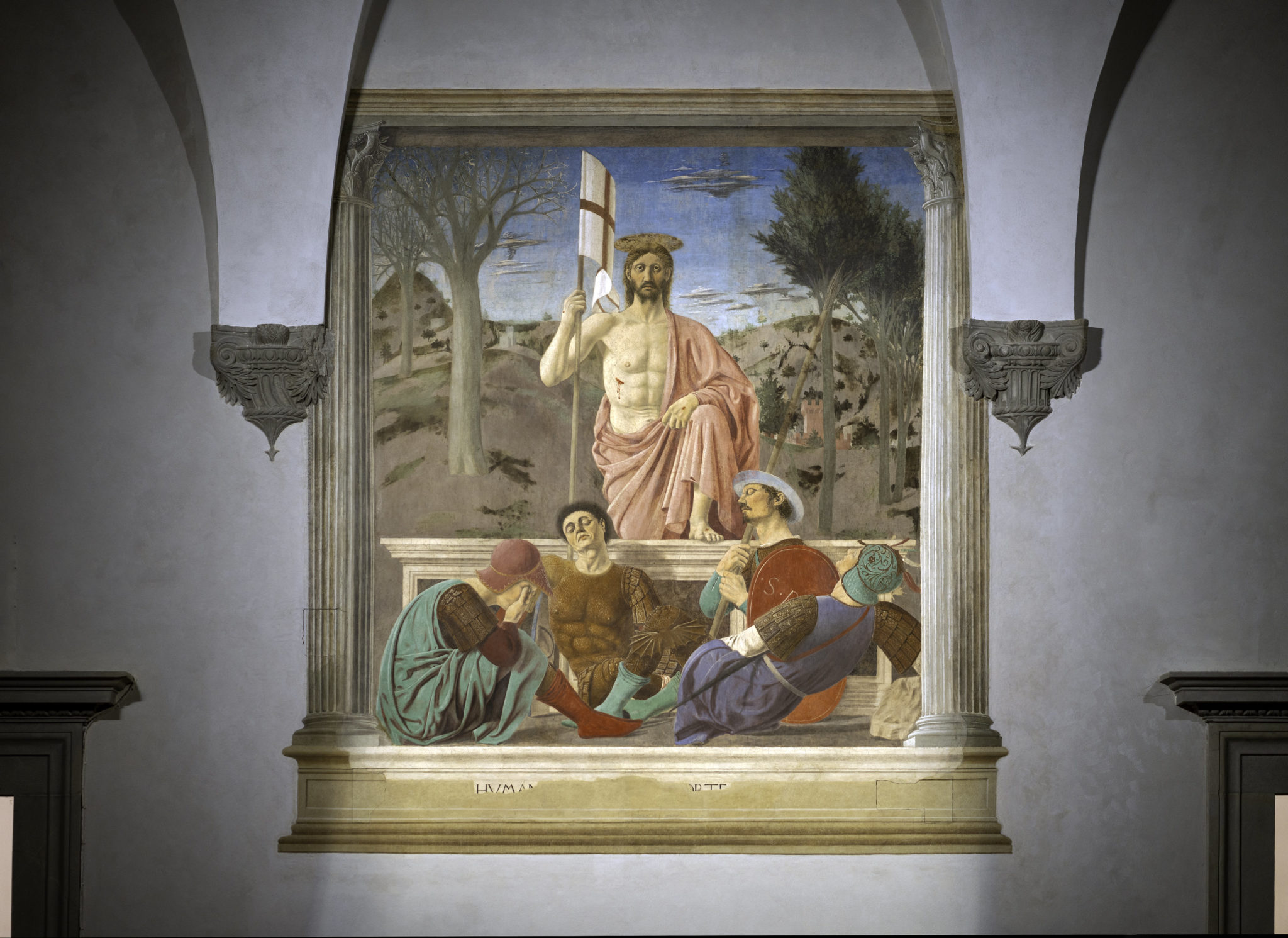
» Piero della Francesca, Resurrection
Piero della Francesca (/ ˌ p j ɛər oʊ ˌ d ɛ l ə f r æ n ˈ tʃ ɛ s k ə /, US also /-f r ɑː n ˈ-/, Italian: [ˈpjɛːro della franˈtʃeska] ⓘ; né Piero di Benedetto; c. 1415 - 12 October 1492) was an Italian painter of the Early Renaissance.To contemporaries he was also known as a mathematician and geometer. Nowadays Piero della Francesca is chiefly appreciated for his art.
.jpg)
St. Sigismund and Sigismondo Pandolfo Malatesta, 1451 Piero della Francesca
Full title. The Baptism of Christ. Artist. Piero della Francesca. Artist dates. about 1415/20 - 1492. Date made. probably about 1437-1445. Medium and support.
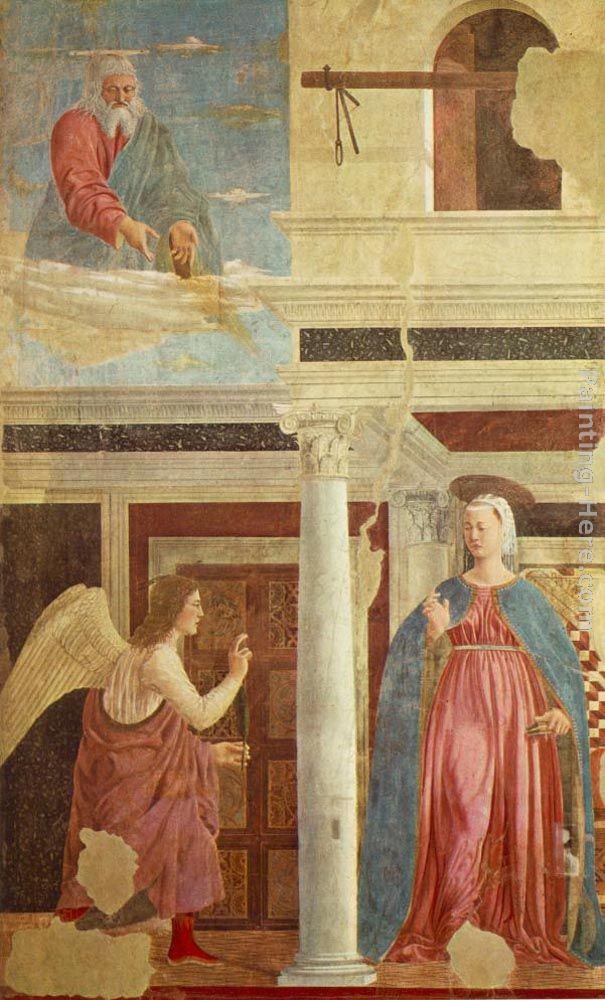
Piero della Francesca Annunciation Painting Best Annunciation Paintings For Sale
Piero della Francesca, one of the most admired artists of the Italian Renaissance, is an extraordinary painting. Striking for its beauty and apparent simplicity, it is one of Piero's last works, and was made for his family palace in Borgo San Sepolcro, Tuscany, where it remained until 1825. When the National Gallery acquired the painting in the.